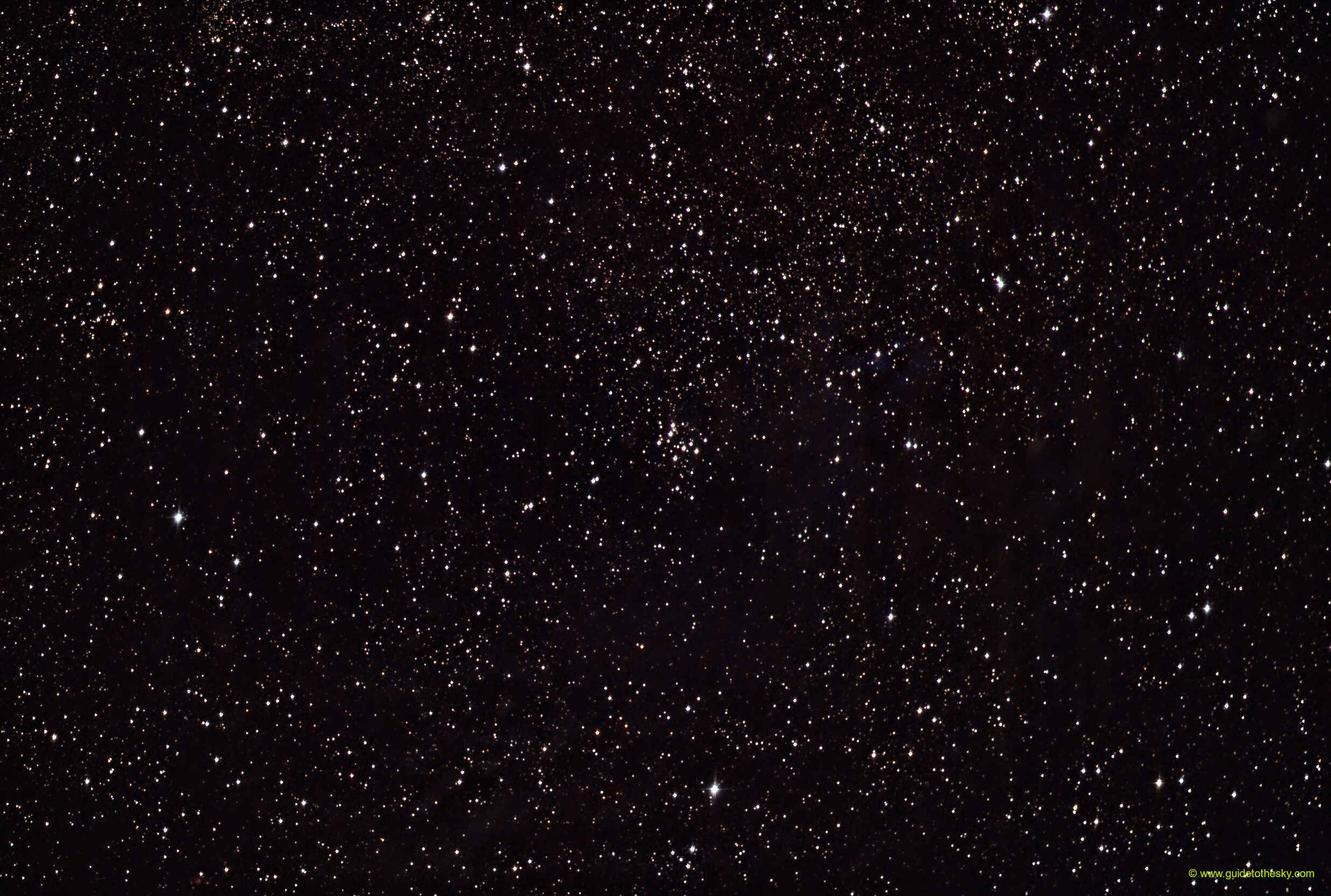Messier 29 - Cygnus

M29 está a {{ object[0].M29.mesDistances[0].dist }} {{ object[0].M29.mesDistances[0].unit }} y un brillo de la {{ object[0].M29.visualMagnitude }} Magnitud. Es característico un carrito o trapecio donde está contenido, formado por estrellas de la 9 Magnitud.
Inscrito en la Vía Láctea, es muy probable la astrofotografía de M29 nos muestre al W, parte de la nebulosa que envuelve a la estrella Sadir y que se extiende más allá de este cúmulo.
M29 - Cooling Tower Cluster - en la IA
Messier 29 (M29), also known as the Cooling Tower Cluster, is a small, open star cluster located in the constellation Cygnus (the Swan). Here's a breakdown of its key features and information:
Key Characteristics:
- Type: Open Star Cluster
- Constellation: Cygnus
- Distance: Approximately 4,000 light-years (estimates vary slightly)
- Apparent Magnitude: 6.6 (visible with binoculars under dark skies, best seen with a small telescope)
- Diameter: About 7 light-years
- Age: Very young, estimated at only about 10 million years old.
- Notable Stars: Contains a handful of bright, hot, blue-white stars. These are the cluster's most massive and luminous members.
- Number of Stars: Estimates range around 50 stars
Why it's called the Cooling Tower Cluster:
The nickname "Cooling Tower Cluster" is a descriptive one. When viewed through a telescope, the arrangement of the brighter stars in the cluster can resemble the shape of cooling towers, like those found at power plants. This arrangement is somewhat triangular or trapezoidal.
Observing M29:
- Best Time to Observe: Late summer and early autumn, when Cygnus is high in the night sky.
- Location: Find Cygnus and look for the asterism known as the Northern Cross. M29 is located south of the star Sadr (Gamma Cygni), which marks the center of the cross.
- Equipment:
- Binoculars: Visible under dark skies away from light pollution, binoculars will show a faint, fuzzy patch of light.
- Small Telescope: A small telescope (e.g., 60mm to 80mm) will resolve the cluster into a collection of faint stars.
- Larger Telescope: Larger telescopes reveal more stars and finer details.
- Observing Tips: Dark skies are essential for seeing M29. Use a star chart or planetarium software to help you locate it.
Scientific Significance:
- Stellar Evolution: M29 is a valuable object for studying stellar evolution. Because the cluster is so young, its stars are still relatively close to their birth mass and are undergoing rapid evolutionary changes.
- Distance Determination: Observing M29 helps astronomers to refine distance measurement techniques within our galaxy.
In summary:
Messier 29 is a relatively faint but interesting open star cluster in Cygnus, best known for the distinctive "cooling tower" shape of its brightest stars when viewed through a telescope. It's a good target for amateur astronomers with binoculars or small telescopes, especially those interested in young star clusters.
Más información sobre Messier 29 en NASA/IPAC.
Mapa alrededor de Messier 29
Otros identificadores de M29:
"C 2022+383" ,"M 29" ,"NGC 6913" ,"OCISM 36" ,"OCl 168" ,"[KPR2004b] 488" ,"[KPS2012] MWSC 3329",

